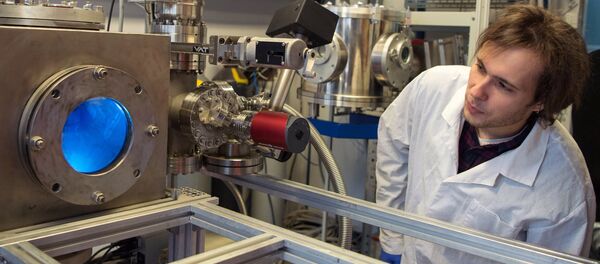Severe plastic deformation (SPD) methods have become an important tool for materials scientists, allowing them to create new, perfected metallic materials, which are becoming increasingly popular in various industries. Experts use different variations of SPD, such as high-pressure torsion, equal channel angular pressing, twist extrusion and multiaxial forging, to produce a range of modern nanomaterials.
Severe plastic deformation allows researchers to refine the material's internal structure to a submicron range, sometimes resulting in the nanostructuring of the material. This process improves a material's properties, particularly resulting in a significant increase in strength. In a number of cases, experts can improve all of a material's properties, including both its strength and plasticity.
Together, Professors Yury Estrin (MISiS, Monash University, University of Western Australia) and Alexei Vinogradov (Norwegian University of Science and Technology, Togliatti State University) published an article on the set of theoretical techniques and modeling concepts that allow for predicting the behavior of these created materials.
"The processes that happen in the material that are subject to severe plastic deformation are rather complex," said Yury Estrin. "SPD causes radical microstructural damage to the material, and predicting the properties of the produced material, especially when several materials are being deformed at the same time, is nearly impossible. Without our modeling the process with the help of a reliable theory that is valid in terms of physics, the experiment becomes a guessing game. Despite the fact that there are plenty of theoretical works, the number of existing models that have good predictive potential is still somewhat low. We analyzed hundreds of articles and the dozens of models described in them. Eventually, we picked the most effective ones and then completed and perfected them."
READ MORE: Russian Scientists Develop Unique "Trap for Light"
According to Estrin and Vinogradov's estimates, there will be significant scientific breakthroughs in SPD-based studies. First and foremost, these exceptional breakthroughs will be made in the sphere of medical implants. Scientific groups headed by Estrin and Vinogradov are currently working on bone implants based on magnesium alloys.
"Magnesium alloys are highly popular today, since implant experts from all over the world are now researching biodegradable materials," Estrin explained. "It is a very tempting perspective — having an implant that can absorb the entire load in the time needed for restoring the bone tissue, and then dissolve in the body without causing any harm. These implants also obviate the need to perform a second surgery for removing the no longer needed implant. It appears to be very easy in theory, but it takes a tremendous effort by scientists to carry out this idea; and you simply cannot do without modeling the deformation processes in the material," he said.
Hybrid materials are combinations of different, often very heterogeneous, materials. At the same time, unlike with conventional composition materials, experts focus on geometry and mutual positioning of the materials' constituent elements. By using SPD techniques, researchers can obtain the desired internal geometry of these hybrid materials and achieve the goal of nanostructuring them at the same time.
READ MORE: Russian Scientists Create New Breakthrough Material for Nuclear Reactors
As a result, materials with unique mechanical properties are produced. Take, for instance, copper alloys reinforced with steel wires: as a result of SPD, the wires curl up into a sort of spring, which results in combining a rare combination of properties — improved strength and high plasticity — in one material.





